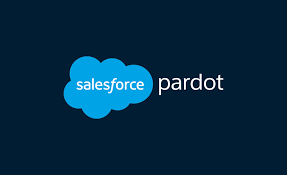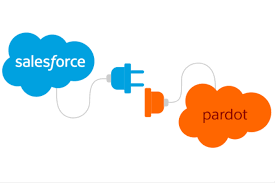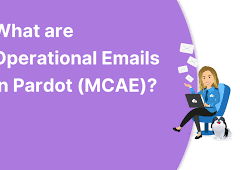Here’s a breakdown of the key differences between Salesforce and the marketing automation platform Pardot:
Distinguishing Factors:
- Scope and Focus: Salesforce is a comprehensive CRM platform catering to various aspects of customer management. Pardot is a specialized marketing automation platform focused on B2B marketing and lead management. Pardot can function synced to the CRM or as a standalone tool.
- Email Marketing and Social Media: Pardot offers advanced features for email marketing campaigns and certain social media functionalities, which the CRM may not cover extensively.
- Lead Scoring: Pardot incorporates lead scoring as a standard feature, whereas Salesforce Marketing Cloud lacks native lead scoring capabilities. Pardot also offers lead grading, showing how interested you should be in a prospect, not just how interested they should be in you.
- Integration with Salesforce CRM: Pardot seamlessly integrates with the SFDC CRM, providing synchronized data and a streamlined experience for Salesforce users.
- User Base and Target Audience: Salesforce caters to businesses of all sizes and industries, while Pardot is primarily targeted at B2B sales and marketing organizations seeking advanced marketing automation capabilities.

Additional Information about Pardot:
- Interaction with Salesforce Campaigns: Pardot can read Salesforce Campaigns with Connected Campaigns enabled, allowing synchronization and updating of engagement metrics as well as extending reporting capabilities.
- Benefits of Choosing Pardot: Pardot provides a comprehensive view of prospects’ life cycles, enabling efficient lead qualification and engagement optimization.
- Salesforce Standard Objects Synced with Pardot: Leads, Contacts, Accounts, Opportunities, Campaigns, Campaign Members, and Tasks sync with Pardot, facilitating comprehensive data management. Custom objects can also be mapped between Pardot and SFDC.
- Creation of Tasks in Salesforce: Pardot can automatically create tasks assigned to CRM owners or specific users, with a workaround needed for tasks assigned to Account Owners.
- Data Import Order: Clients often import data into Salesforce first, then sync it with Pardot for streamlined management and synchronization.
- Comparison with Mailchimp: Pardot is designed for larger enterprises with advanced marketing automation needs, whereas Mailchimp is suited for small to medium-sized businesses with simpler requirements.
- Fun Fact: The name “Pardot” originates from the Latvian verb meaning “to market” or “to sell.”
In summary, while both SFDC and Pardot are integral parts of Salesforce’s cloud-based offerings, they serve distinct purposes in the realm of CRM and marketing, catering to different needs and audiences.













